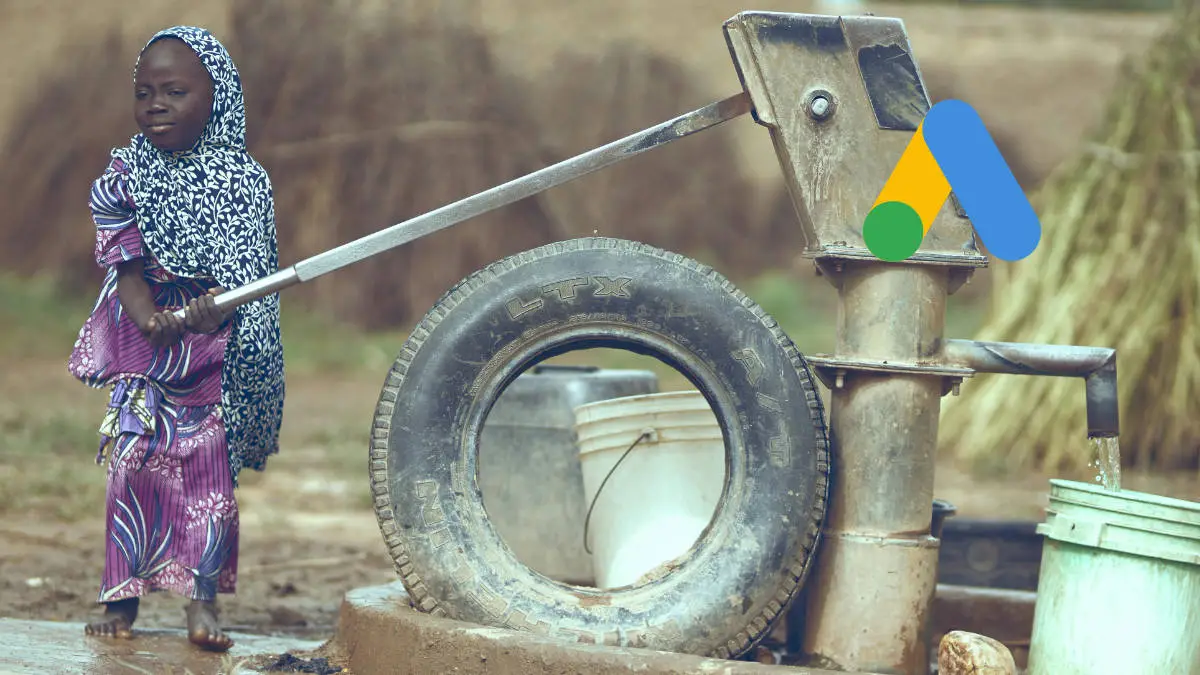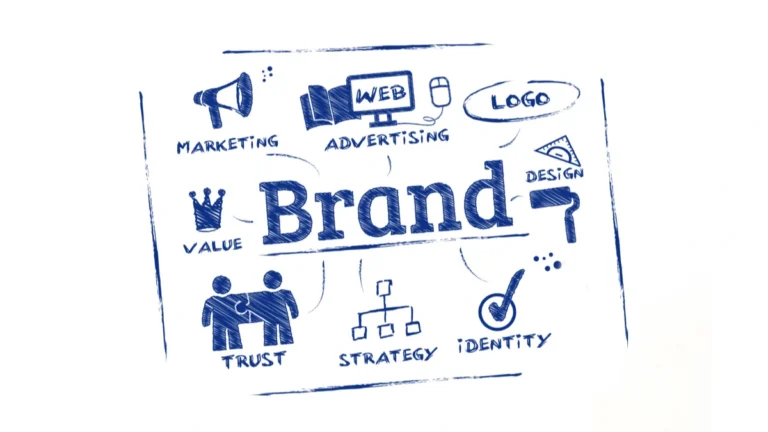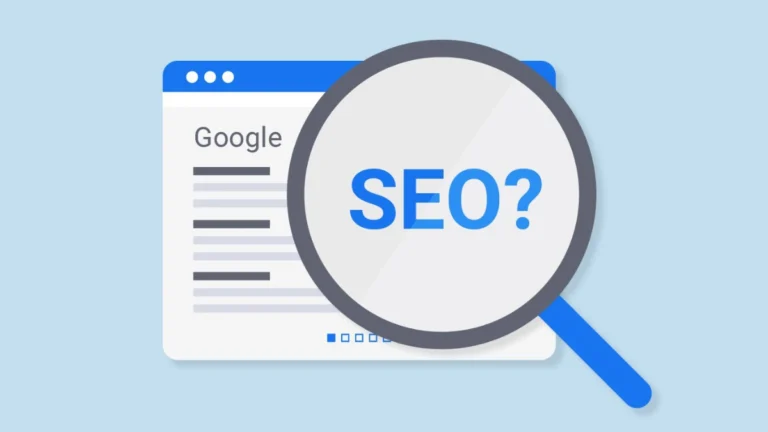As the way people engage with organisations now and causes continues to shift towards online platforms, it has never been more essential for UK charities to make the most of digital marketing. With more people turning to the internet for information, connection, and online giving, charities that embrace digital strategies are better positioned to expand their reach, drive engagement, and make a lasting impact on the communities they serve.
One of the most powerful strategies available to UK charities is Google Ad Grants, a good programme that offers up to £7,500 per month in free Google Ads. This resource enables charities to increase their visibility, connect with potential donors, attract volunteers, and drive traffic to their websites without incurring advertising costs. It’s a cost-effective way to expand a charity’s mission and create significant interactions with supporters.
In this guide, I will provide you with everything they need to navigate and make the most of Google Ad Grants in 2025. As digital trends continue to evolve, this guide will ensure that UK charities are prepared to harness these changes, maximising the benefits of Google Ad Grants to improve their marketing efforts.
What Are Google Ad Grants?
Google Ad Grants is a philanthropic initiative from Google that provides eligible nonprofits with up to £7,500 per month in free advertising on Google Search. This programme allows registered UK charities to run ads promoting their causes, events, or services, increasing their visibility across the world’s most popular search engine. The primary purpose of Google Ad Grants is to help nonprofits achieve their mission by providing them with an effective, no-cost tool for digital outreach, enabling them to drive website traffic, raise awareness, and engage with potential donors and volunteers.
1. The Programme’s History and Global Impact
Launched in 2003, Google Ad Grants has since become one of the world’s largest and most impactful philanthropic programmes. Initially aimed at US-based charities, it was extended to global nonprofits, including those in the UK, to help them benefit from the power of digital advertising. The programme is part of Google’s commitment to giving back to the community through initiatives like Google.org.
Globally, the Google Ad Grants programme has donated more than $1.8 billion annually in free ad space, with millions of nonprofits worldwide benefiting from increased visibility and engagement. With the click of a button, a small charity can reach audiences they otherwise might have never reached, changing the way causes to engage with their communities. The programme has proven especially important in promoting education, health, humanitarian aid, and environmental issues, providing digital platforms for causes that are often underrepresented in mainstream media.
2. How Google Ad Grants Help UK Charities Thrive
Google Ad Grants gives UK charities many benefits, making it a valuable resource for nonprofits looking to expand their digital footprint. Some of these specific advantages include:
- Boosted Visibility for Causes: Google Ads ensure that your charity’s website ranks higher in relevant search results, making it easier for people to discover your mission and support your cause. This increased visibility can lead to more awareness and greater interest in your work.
- Increased Supporter Engagement: By appearing at the top of Google search results, your charity will be more visible to potential donors and volunteers. Well-crafted ads can drive people to your website’s donation pages or volunteer sign-up forms, making it easier to increase engagement with your charity’s programmes.
- Cost-Effective Search Ads: With up to £7,500 in free Google Ads credits per month, charities can promote their causes without incurring the high costs typically associated with digital advertising. These ads can drive high-quality traffic to your website, allowing you to focus on converting visitors into active supporters, whether that means gaining new donors, encouraging regular donations, or growing a community of volunteers.
UK charities can leverage the power of search engine marketing to connect with a broader audience, all while maximising limited marketing budgets by taking advantage of Google Ad Grants.
Who Is Eligible for Google Ad Grants?
While Google Ad Grants provide a helpful strategy for charities to expand their reach, not all organisations are eligible for the programme. UK charities must meet strict requirements and follow Google’s policies to be qualified. Below is a breakdown of the key eligibility criteria and common reasons for application rejections.
1. Eligibility Requirements for UK Charities
To access Google Ad Grants, charities must fulfil the following conditions:
a) Registered Charity Status
Your organisation must be:
- Registered with The Charity Commission for England and Wales, The Scottish Charity Regulator (OSCR), or The Charity Commission for Northern Ireland.
- Alternatively, charities with HMRC-recognised tax-exempt status can also qualify.
b) High-Quality Website with a Clear Mission
- Your charity must have an active, well-maintained website that provides relevant and up-to-date information.
- The website should clearly explain your charitable purpose, services and impact.
- It must feature a secure domain (HTTPS) and provide a positive user experience (UX) by being mobile-friendly and easy to navigate.
c) Agreement to Google’s Policies
Charities must comply with Google for Nonprofits and Google Ad Grants policies, including:
- Non-commercial focus – The website cannot primarily sell products/services unless sales directly support the charity’s mission.
- No political content – Organisations engaging in political lobbying or advocacy are ineligible.
- No overly aggressive advertising – Websites must avoid excessive pop-ups or misleading fundraising tactics.
2. Why Some Applications Are Rejected
Even eligible charities can face rejections. Here are the most common mistakes and how to prevent them:
a) Unclear or Poorly Designed Websites:
Ensure your website is professional, mobile-responsive, and explicitly communicates your charity’s mission and goals.
b) Not Using a Registered Charity Number:
Verify that your organisation is correctly registered with The Charity Commission or HMRC before applying.
c) Violating Google’s Ad Policies:
Read and follow Google’s rules regarding advertising, landing pages and fundraising transparency.
d) Incorrect Google for Nonprofits Registration:
When registering, ensure you provide accurate details and link the correct charity website to avoid delays or rejections.
If you meet these eligibility requirements and avoid common pitfalls, you can successfully apply for Google Ad Grants and maximise your charity impact.
How to Apply for Google Ad Grants
Securing a Google Ad Grant is fundamental for small charities in the UK, allowing them to access £7,500 per month in free Google Ads. However, the application process requires good attention to detail. Below is a step-by-step guide to help charities successfully apply for and activate their grant.
1. Guide to Google Ad Grants Application
a) Register with Google for Nonprofits
Before applying for Google Ad Grants, your charity must join Google for Nonprofits.
- Visit the Google for Nonprofits website.
- Click “Get Started” and sign in with a Google account linked to your charity.
- Provide details about your organisation, ensuring they match official records (e.g., Charity Commission registration).
- Google will verify your charity’s status through Percent, a third-party validation service.
Tip: Use your official charity email address when signing up to avoid verification delays.
b) Complete the Google Ad Grants Eligibility Form
Once your Google for Nonprofits account is approved, you need to complete the Ad Grants eligibility assessment.
- Log in to Google for Nonprofits and navigate to Google Ad Grants.
- Fill out the Ad Grants eligibility form, confirming compliance with Google’s policies and website quality requirements.
- Submit the form and wait for confirmation.
Tip: Ensure your charity website meets Google’s technical and content requirements before submitting.
c) Set Up a Google Ads Account
Unlike standard Google Ads accounts, Ad Grants account requires a separate account with specific settings.
- Visit Google Ads and create a new account using a Google for Nonprofits email.
- Do not enter billing details, as the Ad Grants account does not require payment.
- Configure the account with the correct campaign settings, such as:
- Text-based ads only (no video or display ads).No single-word or overly generic keywords (e.g., “charity” will be rejected).
- Geo-targeting enabled (ensure ads focus on the UK if applicable).
- Submit your account for review.
Tip: Follow Google’s recommended ad structure, keyword policies, and compliance guidelines to avoid rejections.
2. Estimated Timeline for Approval
Approval Timeline:
- Google for Nonprofits Registration is about 3–7 working days.
- Ad Grants Eligibility Form Review may take 5–10 working days.
- Google Ads Account Setup & Activation is between 5–15 working days.
Tips to Speed Up the Approval Process:
- Double-check your charity registration details before applying.
- Ensure your website meets Google’s content and quality standards.
- Follow the correct ad account settings to avoid compliance issues.
- Respond promptly if Google requests additional information.
Once approved, your charity can start running free ad campaigns to raise awareness, attract donors, and drive engagement with its cause.
Effective Google Ad Grants Management
Effectively managing a Google Ad Grant requires ongoing optimisation and compliance with Google’s policies. You can maximise ad performance, increase engagement, and maintain grant eligibility by following these best practices.
1. Campaign Setup
a) Setting up Goals
Before launching campaigns, charities should define clear objectives to ensure ads drive the desired actions. Common goals include increasing donations, recruiting volunteers, raising awareness and promoting events.
To track success, it is essential to set up Google Analytics and conversion tracking. This allows charities to measure how effectively ads contribute to their objectives.
b) Keyword Research Strategies
Selecting the right keywords ensures that ads reach the intended audience. Mission-specific, long-tail keywords perform better than generic terms, as they align with user intent. Using Google’s Keyword Planner can help identify low-competition, high-intent keywords.
Google Ad Grants restrict the use of single-word and overly generic keywords, so charities must focus on specific phrases relevant to their cause. Negative keywords should also be used to filter out irrelevant traffic.
c) Creating Compelling Ad Copy
Create an effective ad copy that is clear, engaging and action-driven. Strong calls to action encourage users to take the desired steps, such as donating or signing up to volunteer. Ad copy should highlight the charity’s impact and use persuasive language that resonates with potential supporters.
It is also important to ensure consistency between ad content and landing page messaging. Testing multiple ad copy variations can help determine which approach generates the best engagement.
d) Designing Effective Landing Pages
A well-designed landing page improves conversion rates by providing a seamless user experience. Key elements include clear messaging that aligns with the ad, a mobile-friendly design, fast loading times, and trust signals such as testimonials and security badges.
Each campaign should direct users to a dedicated landing page rather than the charity’s homepage. This helps maintain focus on the intended action and improves the chances of conversion.
e) Geo-Targeting for UK-Based Campaigns
Geo-targeting ensures that ads reach the right audience within the UK. Campaigns can be set to specific regions or cities to align with a charity’s area of operation. Radius targeting specific locations can also be useful for local programmes.
Regular monitoring of Google Ads location reports can help refine geo-targeting strategies to improve relevance and engagement.
2. Technical Standards for Ad Grants Success
a) Account Performance Standards
Google Ad Grants accounts must meet strict performance criteria to remain active. Charities are required to maintain a 5% click-through rate (CTR) across all campaigns. In addition, accounts must have at least two ad groups per campaign, each containing multiple ads, and include at least two active site link extensions.
Failure to meet these standards for two consecutive months can result in account suspension, so regular performance reviews are essential.
b) Maintaining a 5% Click-Through Rate
A low Click-Through Rate (CTR) suggests that ads are not relevant to users. Improving CTR can be achieved through refined keywords, stronger ad copy, and ad extensions. Removing underperforming ads and testing new variations can also help maintain compliance with Google’s requirements.
c) Implementing Conversion Tracking
Google requires charities to track conversions, such as donation completions, volunteer sign-ups, event registrations, or newsletter subscriptions. Setting up conversion tracking through Google Tag Manager or Google Analytics ensures accurate performance measurement.
Prioritising high-value actions, such as donations, over lower-impact engagements provides a clearer picture of campaign success.
d) Smart Bidding Strategies
Unlike standard Google Ads, Google Ad Grants require using Smart Bidding strategies. Options such as Maximise Conversions and Target CPA (Cost-Per-Acquisition) help optimise ad spend and drive better results. Charities should monitor bid changes and switch strategies as needed to maintain performance.
e) Common Compliance Mistakes
Many charities lose their Google Ad Grant due to avoidable mistakes. Common violations include failure to maintain a 5% CTR, using single-word or generic keywords, having an outdated website, and neglecting conversion tracking.
To prevent account suspension, charities should conduct monthly reviews to ensure compliance and optimise underperforming areas.
Successfully managing a Google Ad Grant requires a proactive approach, from goal setting and keyword strategy to compliance with Google’s technical requirements.
UK charities can maximise their £7,500 monthly ad budget, attract more donors and volunteers, and ensure long-term eligibility by following these best practices.
Optimising Your Google Ad Grants Campaigns
Effectively managing a Google Ad Grant goes beyond simply running ads, it requires constant optimisation to improve performance and maximise impact. Charities can refine their campaigns, attract the right audiences and drive deep engagement by leveraging advanced strategies.
1. Using Google Analytics with Ad Grants
Google Analytics is a powerful tool for measuring the success of Ad Grants campaigns. Integrating it with Google Ads, you can track user behaviour, identify high-performing pages, and understand which campaigns drive the most valuable actions.
Key metrics to monitor include:
- Bounce rate: High bounce rates may indicate irrelevant traffic or poorly optimised landing pages.
- Session duration: Longer sessions suggest users are engaging with content.
- Goal completions: Tracking donations, sign-ups and other conversions helps measure success.
Setting up Google Analytics goals aligned with campaign objectives ensures accurate performance evaluation.
2. A/B Testing Ad Variations
A/B testing (split testing) involves running multiple versions of an ad to determine which performs best. Testing elements such as headlines, descriptions, calls to action, and display URLs can help refine messaging and improve engagement.
Best practices for A/B testing:
- Test one element at a time to isolate what affects performance.
- Run tests for at least two weeks to gather significant data.
- Measure key metrics such as click-through rate (CTR) and conversion rate to determine winners.
Regular testing allows charities to constantly optimise their ads for better results.
3. Seasonal Campaign Strategies
Charities often experience fluctuations in engagement based on seasonal trends. Customising campaigns to align with key events, awareness months, and giving seasons can significantly boost performance.
Examples of seasonal opportunities:
- Year-end giving (November–December): Charities can capitalise on Giving Tuesday and winter donations.
- Awareness campaigns: Adjust messaging to align with cause-related awareness months (e.g., Mental Health Awareness Week).
- Event-driven campaigns: Promote charity walks, fundraisers, and community events with time-sensitive ads.
Changing ad copy, keywords, and bidding strategies based on seasonal trends ensure maximum impact.
4. Leveraging Audience Targeting
While Google Ad Grants have limitations on some advanced targeting options, charities can still refine their audience reach through:
- Demographic insights: Analysing audience data to understand who engages with ads.
- Geo-targeting: Focusing on specific locations within the UK to reach the most relevant audience.
- Remarketing strategies: While traditional remarketing is restricted, charities can optimise landing pages to encourage repeat engagement.
Combining audience insights with well-structured campaigns helps increase engagement and conversion rates.
5. Tracking and Reporting Metrics
Consistently monitoring campaign performance is key to sustaining success with Google Ad Grants. Beyond basic metrics like CTR, charities should focus on deeper insights:
- Conversion rate: Measures how many ad clicks lead to valuable actions.
- Cost-per-conversion: Although Google Ad Grants provide free advertising, tracking efficiency ensures optimal resource use.
- Assisted conversions: Helps understand how ads contribute to broader fundraising and engagement efforts.
Setting up regular performance reviews allows charities to refine strategies and maintain compliance with Google’s requirements.
Your charity can ensure its Google Ad Grants campaigns remain competitive, effective, and impactful by implementing these advanced optimisation techniques. Constant data analysis, testing, and strategic changes will help maximise the £7,500 monthly budget while driving significant outcomes for your cause.
Tackling Challenges in Google Ad Grants Management
While Google Ad Grants provide a valuable opportunity for UK charities, many organisations face challenges in maintaining compliance, optimising performance and ensuring long-term success. I will outline common obstacles and practical strategies to help charities navigate them effectively in this section.
1. Navigating Policy Restrictions
Google Ad Grants have strict policies that charities must follow, including ad quality, keyword selection, and account performance requirements. Violating these policies can lead to suspending the account.
Common policy challenges:
- Low click-through rate (CTR): Accounts must maintain a minimum 5% CTR.
- Single-word and overly generic keywords: Google prohibits broad terms like “donate” or “volunteer.”
- Inactive accounts: Lack of regular updates and optimisation can lead to deactivation.
How to navigate policy restrictions without risking suspension:
- Regular performance monitoring: Check CTR weekly and pause underperforming ads.
- Use long-tail keywords: Target specific search queries relevant to your cause (e.g., “donate to UK cancer research”).
- Maintain activity: Log in at least once a month, update ad copy, and review keyword performance.
Staying informed about Google’s policies and making proactive changes helps maintain compliance.
2. Overcoming Low Conversion Rates
Attracting clicks is only the first step, converting visitors into donors, volunteers or supporters is essential. Low conversion rates often stem from poorly optimised landing pages, unclear calls to action (CTAs) or targeting the wrong audience.
Common issues affecting conversions:
- Landing pages not aligned with ads: If an ad promotes donations but directs users to a general homepage, visitors may leave without taking action.
- Slow or unresponsive websites: Page load speed impacts user experience and conversion rates.
- Weak or unclear CTAs: If users aren’t guided towards an action (e.g., “Donate Now” or “Sign Up”), they may disengage.
How to boost conversion rates for maximum impact:
- Optimise landing pages: Ensure they match ad intent, are mobile-friendly, and include strong CTAs.
- Improve page load speed: Use tools like Google PageSpeed Insights to identify and fix issues.
- Use conversion tracking: Monitor which ads drive significant actions and adjust accordingly.
You can improve conversion rates and maximise impact by refining the charity website experience and ad targeting.
3. Budget Management Tips
Although Google Ad Grants provide up to £7,500 per month, effective budget allocation is key to maximising impact. Common budget-related challenges include inefficient keyword spending and low ad use.
Common budget issues:
- Hitting the daily budget limit too early: Campaigns stop running mid-day due to high bid competition.
- Underutilising the grant: Some charities fail to spend their full allocation due to low ad engagement.
- Inefficient bidding strategies: Google restricts Ad Grants accounts to automated bidding, limiting control.
How to make the most of your Google Ad Grants budget:
- Use automated smart bidding: Enable “Maximise Conversions” to improve ad performance.
- Schedule ads intentionally: Run ads during peak engagement hours rather than 24/7.
- Focus on high-intent keywords: Prioritise terms more likely to lead to conversions rather than broad awareness.
A well-structured approach to budgeting ensures the full grant amount is used effectively.
4. Troubleshooting Account Issues
Technical and policy-related issues can lead to account suspensions or performance declines. Addressing problems quickly helps maintain a strong ad presence.
Common account issues:
- Account suspension due to policy violations (e.g., missing compliance updates).
- Ads disapproved for restricted keywords or unclear messaging.
- Low ad impressions due to poor keyword targeting or competition.
How to resolve common account issues quickly and effectively:
- Check policy updates regularly: Google occasionally updates requirements; staying informed prevents compliance issues.
- Review disapproved ads and keywords: Edit ads to align with Google’s policies and resubmit.
- Improve keyword strategy: Use Google’s Keyword Planner to identify relevant, high-performing search terms.
Proactive monitoring and quick issue resolution help charities maintain uninterrupted ad campaigns.
Google Ad Grants in 2025 and Beyond
As digital marketing continues to evolve, UK charities must stay ahead of emerging trends to maximise their impact. Google Ad Grants is expected to undergo changes in response to shifts in user behaviour, technical innovations, and updates in Google’s advertising policies. Understanding these changes will help charities future-proof their strategies and continue driving deep engagement.
1. Emerging Digital Marketing Trends
The way people search, engage with content, and donate online is constantly changing. Some key trends shaping the future of digital marketing for charities include:
- AI-driven advertising – Google’s increasing reliance on artificial intelligence (AI) and machine learning means automated bidding, generating ad copy and audience targeting will become even more sophisticated.
- Voice search optimisation – As more users rely on voice assistants like Google Assistant and Alexa, charities should customise their content to match conversational queries.
- Video-first content – Video ads and short-form content on platforms like YouTube and TikTok are gaining traction, making visual storytelling an essential part of charity marketing.
- Privacy-focused marketing – With stricter data regulations and the phasing out of third-party cookies, charities must adapt their targeting strategies while maintaining compliance with privacy laws.
2. Predicted Changes in 2025-2026
While Google Ad Grants remains a valuable tool, charities should prepare for potential updates in the coming years, such as:
- Stricter compliance requirements – Google may refine its policies, requiring charities to demonstrate even stronger ad performance and engagement metrics.
- Increased automation – Expect greater reliance on AI-powered campaign management, reducing manual changes but demanding a deeper understanding of automation tools.
- More competition for ad space – As more charities adopt Google Ad Grants, bidding strategies and quality content will become even more critical to standing out.
3. Preparing Charities for Digital Transformation
To stay competitive, UK charities must embrace digital transformation by:
- Investing in digital skills training for their teams.
- Regularly updating their websites to meet SEO and user experience (UX) standards.
- Experimenting with new ad formats, such as video and interactive content.
- Leveraging first-party data to personalise donor engagement.
Your charity can continue to harness Google Ad Grants effectively, ensuring long-term growth and sustainability in an increasingly digital space by staying informed and proactive.
My Final Thoughts
Navigating the digital space as a charity can feel overwhelming, but with the right strategy, the opportunities are limitless. Google Ad Grants is one of the most useful tools available to UK charities, providing up to £7,500 per month in free advertising to increase visibility, attract supporters, and drive the desired action.
Having worked with charities to optimise their digital presence, I’ve seen first-hand how a well-managed Google Ad Grants account can transform engagement and fundraising efforts. Whether it’s increasing website traffic, boosting donations, or reaching new volunteers, the impact of a properly executed campaign cannot be overstated.
If your charity is eligible but hasn’t taken advantage of this programme, now is the time to act. With the ever-changing digital era, staying ahead requires a proactive approach. By following the strategies I outlined in this guide, setting clear goals, refining ad campaigns, and constantly optimising performance, your charity can fully harness the potential of Google Ad Grants.
I encourage you to take the first step today. Register for Google Ad Grants, implement the best practices shared in this guide, and start seeing the impact of digital marketing on your mission. If you need expert guidance, book you free consultation to help you maximise your results.
Stay Updated with the Latest Charity Insights
Sign up for our newsletter to receive valuable tips, updates, and exclusive offers to help your charity thrive.



